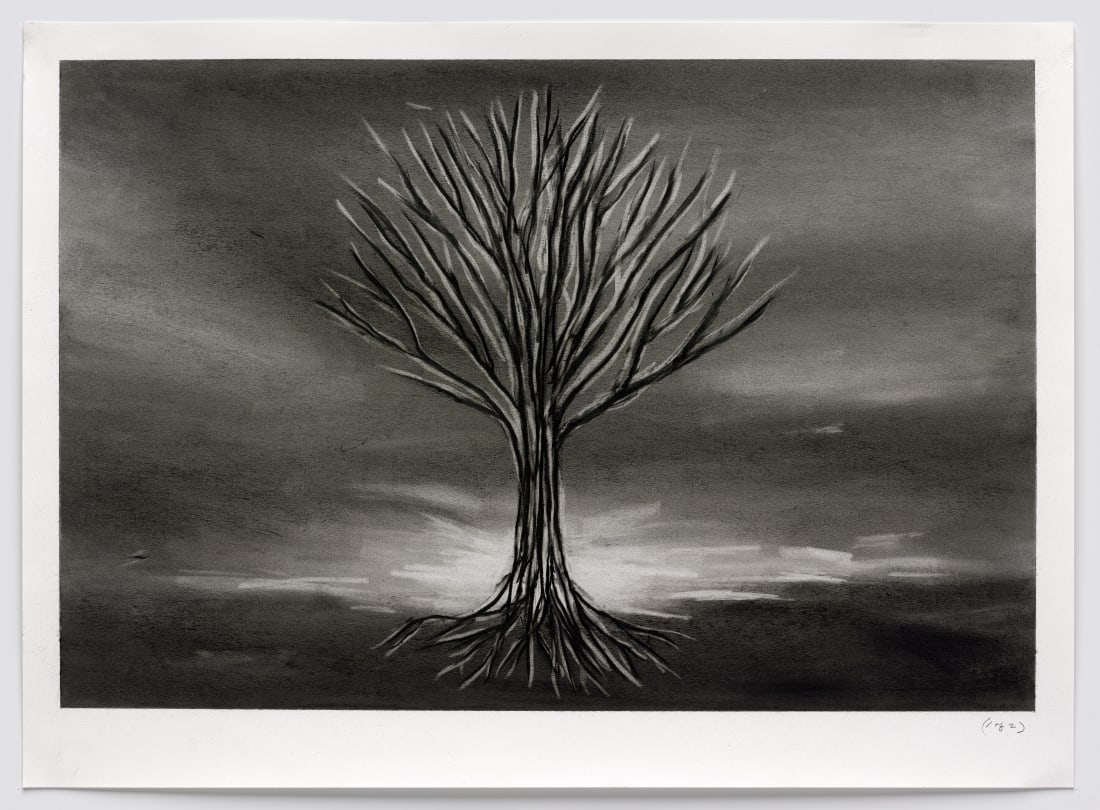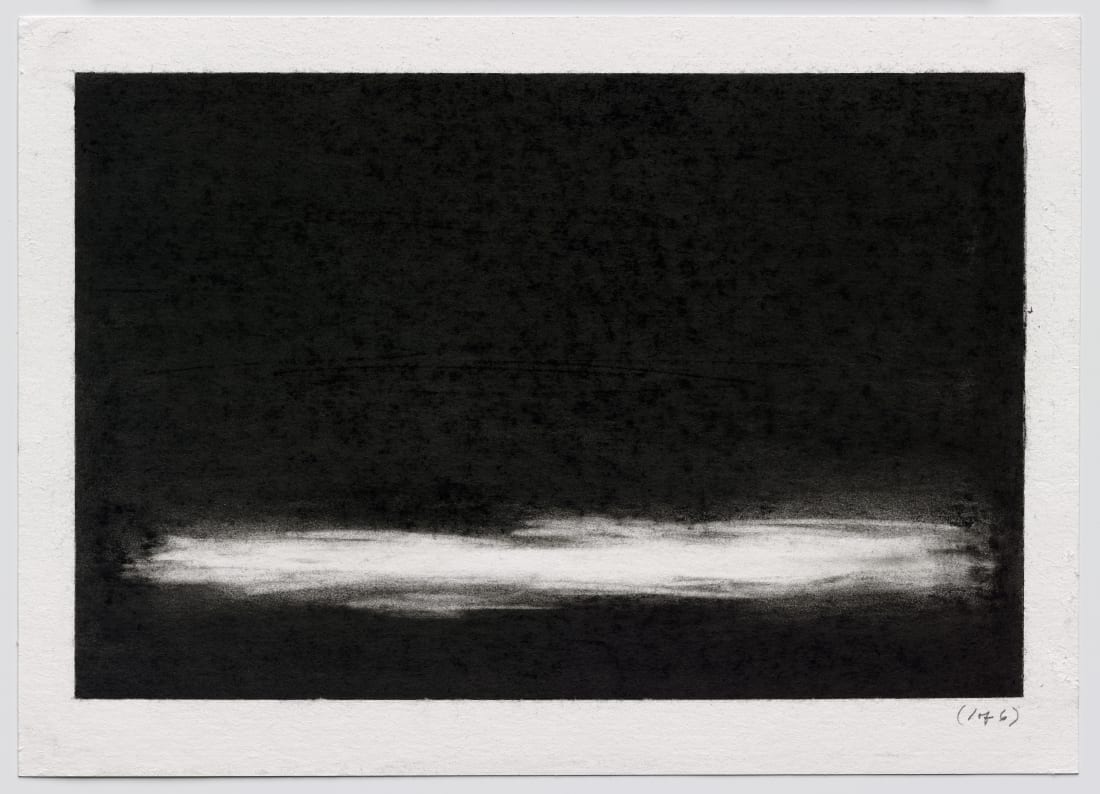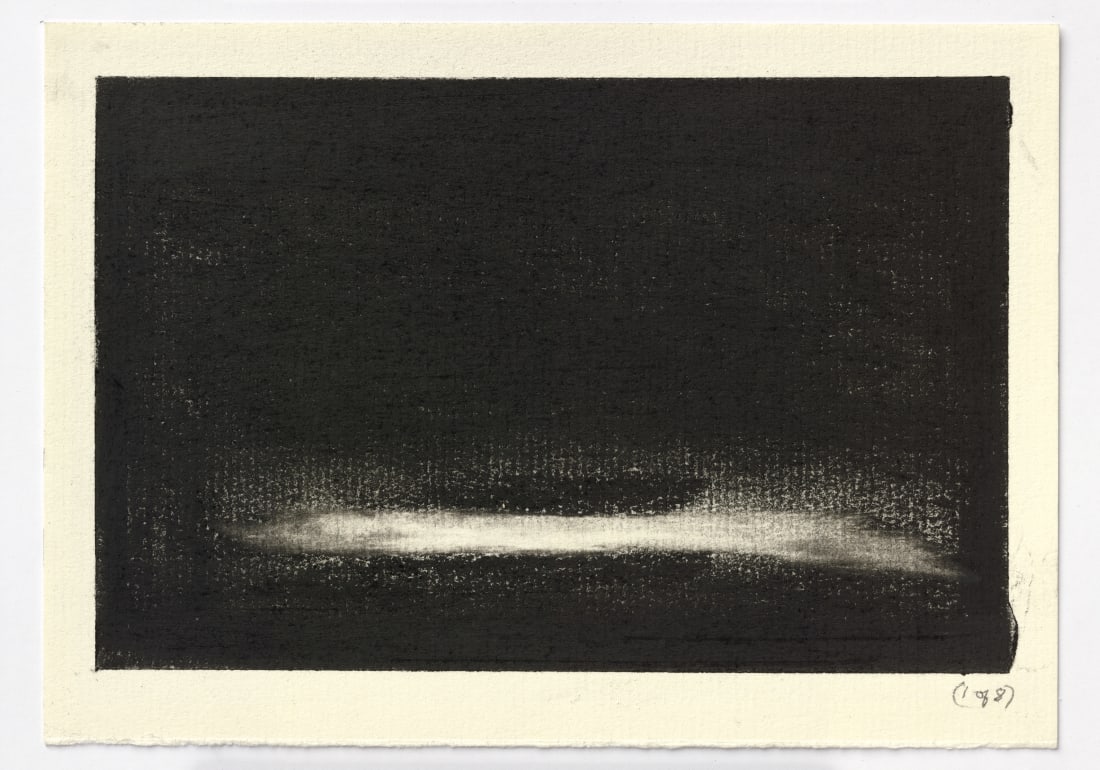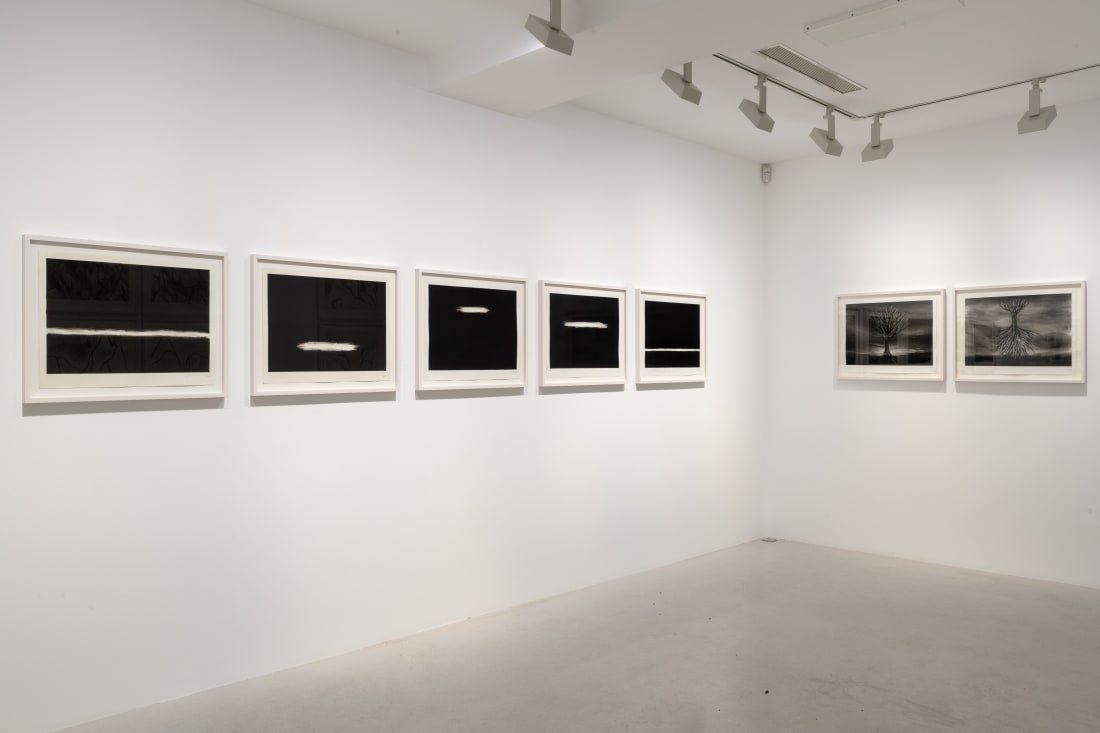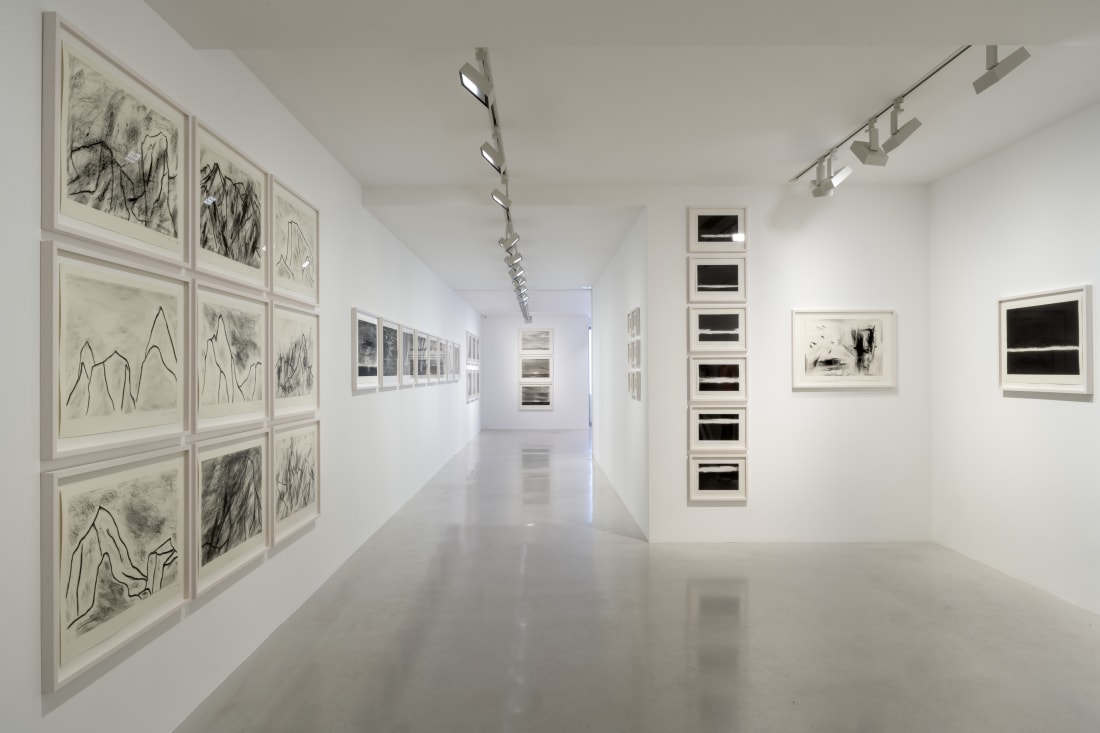

Overview
I think by drawing.
Galerie Thaddaeus Ropac is pleased to present an exhibition of new drawings by American artist Robert Wilson, presented on the occasion of his new stage production of Der Messias, an oratorio by G. F. Händel adapted by W. A. Mozart, at the Théâtre des Champs-Elysées in Paris.
While widely known as a highly acclaimed stage director and playwright, Robert Wilson’s work is firmly rooted in the fine arts. An accomplished draftsman, painter and video maker he is one of the rare artists who works across artistic media without being buoyed by one method of making. In the new series on view, the artist captures on paper ephemeral moments of his latest production. Rendered in subtle tones of black and white, the works range from pure abstraction to a specific sketch of what Wilson envisioned for an act, scene or interlude. Rather than a realistic render of the stage design, they represent energy streams, echoing Wilson’s use of light to define space on stage.
For Wilson, the strict structure of Der Messiah, determined by the alternation between solo numbers for the four vocal soloists and an equal number of choral sections, constitutes the starting point for a staged performance that works with surreal images and attempts to create a vessel for the music. As he states: ‘For me, Der Messias is not just a religious work, but rather a kind of spiritual journey’, a journey equally translated in his highly contrasted drawings.
Often presented in sequence, the drawings offer subtle variations based on the same motif, acting as records of his creative process during rehearsals. Created in Berlin and Salzburg and closely related to the evanescence of a moment, they can also be appreciated independently from his theater as pure poetical objects.
Der Messias, a co-production of the Mozarteum Foundation Salzburg with the Théâtre des Champs-Elysées and the Salzburg Festival, is directed by Robert Wilson and conducted by Marc Minkowski. The drawings were created in Berlin and Salzburg.
Born in Waco, Texas, Robert Wilson is among the world’s foremost theater and visual artists. His works for the stage unconventionally integrate a wide variety of artistic media, including dance, movement, lighting, sculpture, music and text. His images are aesthetically striking and emotionally charged, and his productions have earned the acclaim of audiences and critics worldwide. After being educated at the University of Texas and Brooklyn’s Pratt Institute, Wilson founded the New York‐based performance collective ‘The Byrd Hoffman School of Byrds’ in the mid1960s, and developed his first signature works, including Deafman Glance (1970) and A Letter for Queen Victoria (1974‐1975). With Philip Glass he wrote the seminal opera Einstein on the Beach (1976).
Wilson’s artistic collaborators include many writers and musicians such as Heiner Müller, Tom Waits, Susan Sontag, Laurie Anderson, William Burroughs, Lou Reed and Jessye Norman. He has also left his imprint on masterworks such as Beckett’s Krapp’s Last Tape, Brecht/Weill’s Threepenny Opera, Debussy’s Pelléas et Melisande, Goethe’s Faust, Homer’s Odyssey, Jean de la Fontaine’s Fables, Puccini’s Madama Butterfly and Verdi’s La Traviata. Wilson's drawings, paintings and sculptures have been presented around the world in hundreds of solo and group showings, and his works are held in private collections and museums throughout the world. Wilson has been honored with numerous awards for excellence, including a Pulitzer Prize nomination, two Premio Ubu awards, the Golden Lion of the Venice Biennale, and an Olivier Award.
He was elected to the American Academy of Arts and Letters, as well as the German Academy of the Arts, and holds 8 Honorary Doctorate degrees. France pronounced him Commander of the Order of Arts and Letters (2003) and Officer of the Legion of Honor (2014); Germany awarded him the Officer’s Cross of the Order of Merit (2014).
Wilson is the founder and Artistic Director of The Watermill Center, a laboratory for the Arts in Water Mill, New York.
Video


